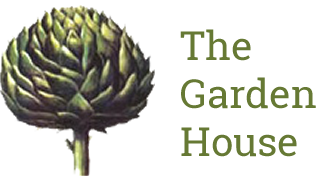Plant of the month: Cranesbill Orion
Posted:12 June 2011
At The Garden House we have a variety of geraniums in bloom, many looking fantastic and coping well with the drought – one of them is a favourite, Geranium ‘Orion’. It is planted prominently in our herbaceous beds, its striking violet-blue flowers really stand out, supporting the gorgeous roses (especially wonderful next to Rosa mundi) and other herbaceous perennials. What a special and easy plant, it flowers superbly all summer long
Common name: Cranesbill Orion
Family: Geraniaceae
 Cranesbills, Geranium, comprise a genus of around 300 species of annuals, biennials and herbaceous, semi-evergreen, sometimes tuberous perennials. They are sometimes confused with the genus Pelargonium, commonly, though mistakenly, known as geranium.
Cranesbills, Geranium, comprise a genus of around 300 species of annuals, biennials and herbaceous, semi-evergreen, sometimes tuberous perennials. They are sometimes confused with the genus Pelargonium, commonly, though mistakenly, known as geranium.
Herbaceous perennial: Fully hardy, it is in the Pratense group of hardy geraniums.
This stunning cultivar has attractive, highly dissected leaves (medium green, slightly hairy with paler more hairy reverse) that almost disappear from sight when the plant is in full bloom.
It bears large violet-blue flowers up to 5cm (2in) across, with fine dark red veins with white at the centre. It starts flowering in May and can go on until the autumn.
Height & spread: 80cm (31in) high x 170cm (67in)
Soil: Fertile, well-drained to moist
Aspect: Full sun or partial shade. Cranesbills are found in all except very wet habitats in temperate regions. They are generally easy to grow. Compact perennials, to about 15cm tall, are good for a rock garden; trailing, spreading or mat-forming plants are effective as ground cover in a woodland or wild garden. Taller, clump-forming species and hybrids are suitable for a border or among shrubs.
Cultivation:
- Perfect for underplanting roses or filling the front of a border, coping well in full sun or partial shade.
- Water freely in the growing season. This plant is fast-growing and will benefit from a late summer chop to tidy up its habit and encourage production of fresh foliage and extended flowering.
- Plants may be damaged by vine weevil and sawfly larvae, slugs and snails. In dry conditions powdery mildew may be a problem.
Propagation:
- By seed sow in containers outdoors as soon as ripe or in spring.
- Lift and divide large colonies in spring.
It has deservedly received the Award of Garden Merit (AGM).

